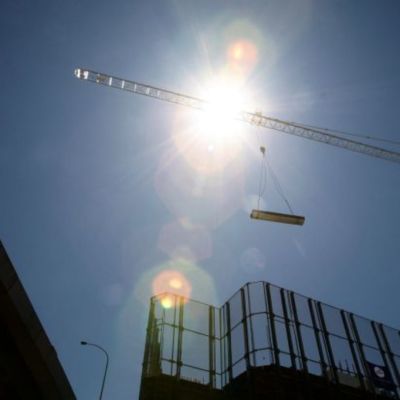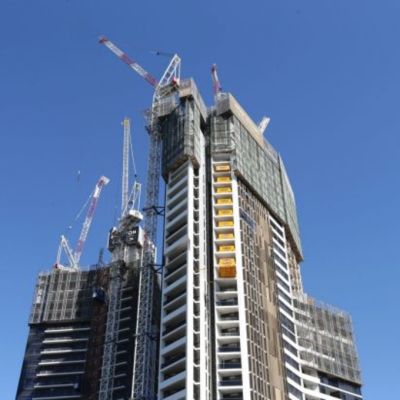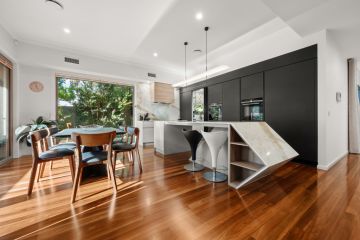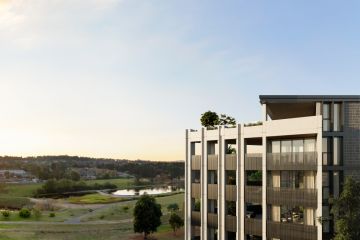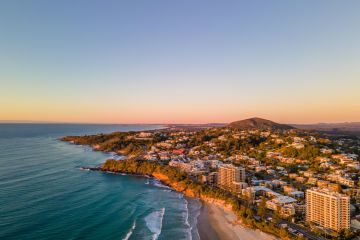'Only a matter of time' before oversupply causes property prices to fall, economist says

Australia’s three biggest capital cities will all face falls in property prices as record levels of apartment building translate into an oversupply, economists claim.
An overwhelming majority of 26 housing experts and economists surveyed by comparison website Finder believe there is an oversupply of apartments in Melbourne and Brisbane.
Of those experts surveyed, three quarters claimed there are too many apartments in Melbourne.
Despite oversupply concerns for inner Melbourne for the past few years, Victoria broke a record for the highest level of building approvals in September 2016 and the Commonwealth Bank estimates 140,000 apartments will be approved for construction in Melbourne from 2016 to 2018
About 70 per cent of the panel thought Brisbane was facing an oversupply, while about 40 per cent believed there were too many apartments being built in Sydney.
This has some experts anticipating apartment price drops in some suburbs of up to 20 per cent by 2019.
A 20 per cent decline on Sydney’s median apartment price of $711,256 is a fall of more than $140,000. In Melbourne, the decline would be closer to $90,000 and in Brisbane it would be a $70,000 loss.
AMP Capital chief economist Shane Oliver, who was on the panel, said there were clear signs of an oversupply in Brisbane where prices were already “coming off the boil”.
The Brisbane median apartment price fell 5.7 per cent in the three months to December, Domain Group data shows, but in Melbourne and Sydney, prices were up 2.4 per cent and 2.9 per cent respectively.
“It’s a struggle to say it’s a huge oversupply in Sydney, but it’s there in pockets … the lower north shore, Parramatta, Bankstown and around the inner city areas are the most affected by apartment development,” Dr Oliver said.
He predicted that oversupplied suburbs in Sydney would face substantial price falls if the Reserve Bank increases interest rates in 2018-19.
“For apartments, [in areas where] there’s huge supply, we could see declines of 15 to 20 per cent. It’s only a matter of time.”
Already, some property owners who bought off-the-plan in Brisbane in the past five years are reselling their properties at a loss, BIS Shrapnel senior manager residential Angie Zigomanis said.
His research into inner Melbourne re-sales of new apartments bought since 2011 found more than 50 per cent of vendors were selling for less than they bought the properties for in areas such as Southbank, Docklands and the CBD.
“People pay a premium to buy new and there have already been people who have taken a hit,” Mr Zigomanis said. But he said the effect was limited to the inner suburbs, rather than a city-wide oversupply.
In Brisbane, about 20 per cent of those buying since 2011 were selling at a loss, but that figure likely understated the nature of the oversupply due to strong price growth in 2012 and 2013.
Off-the-plan sales at a loss in Sydney were “fairly minimal” to date, he said.
“In Sydney we suspect areas where supply is high it’s a matter of time [before losses are seen].”
But not every expert agreed an oversupply would translate into substantial price declines. Finder insights manager Graham Cooke said property had proved “relatively resilient” due to negative gearing encouraging demand for properties with strong yields.
“Over-development in particular areas, especially if apartment sizes are small, can take the heat off property prices,” he said.
“If price falls do come in cities, they are likely to hit the outskirts first … [but] as long as there’s population growth and immigration, oversupply tends to naturally sort itself out.”
And it’s unlikely the oversupply would be spread evenly over the Sydney market in particular, which limits how far prices could fall, Domain Group chief economist Andrew Wilson said.
“There’s more supply coming through in Sydney, but there’s no sign of an oversupply.
“In Brisbane, there have already been price falls but it’s likely we’re coming close to the bottom of the market – though we’re talking years, rather than months, before we see any improvements.”
Apartment supply is declining in Brisbane and Melbourne, but has left a pipeline of apartments yet to be completed.
We recommend
States
Capital Cities
Capital Cities - Rentals
Popular Areas
Allhomes
More
